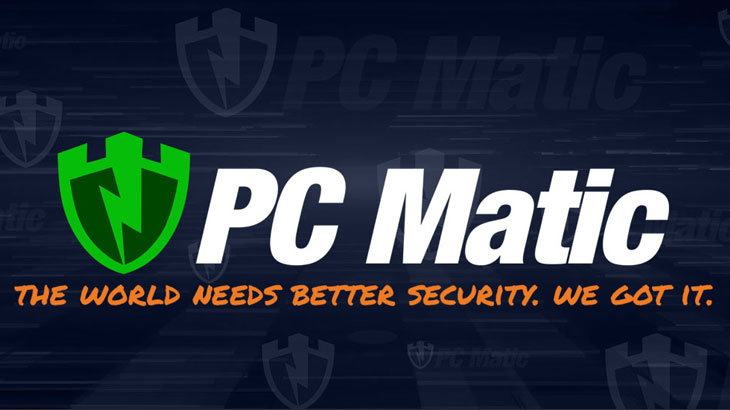PC Matic is the collection of all of PC Pitstop’s technologies under one hood and one integrated architecture. PC Matic comes with SuperShield, our real-time protection component that uses a global whitelist to stop all known bad and unknown malware from running. It also removes “junk” files to free up disk space, adjusts Internet settings for better performance, removes invalid registry keys, adjusts several registry settings that can improve overall performance, defrags your hard drives, loads the latest drivers, cleans the computer of spyware and viruses, optimizes Windows services, updates vulnerable applications and runs multiple benchmarks.
What is “Application Whitelisting”?
Application whitelisting is an alternative approach used in antivirus solutions. Application whitelisting uses a different approach than traditional security solutions. Using a whitelist solution allows only tested and deemed trusted programs to execute on your computer. This lowers the risk of a malware infection, for two reasons.
- Malware will never be a tested and proven safe program.
- When malware attempts to infect a PC, the executable is compared to the whitelist. Since it is not a trusted program, it will not be allowed to run. Application whitelisting has been cited as a proactive means of protection against today’s cyber security threats by the NSA, FBI and the Department of Homeland Security.
What “Junk” Files Does PC Matic Remove?
Windows often forgets to clean up many files that are no longer needed by the system. The space taken up by these files can clog your disk and cause slower disk access. These files are in three major categories:
- Recycle Bin. Files are not actually removed from the drive when you delete them with Explorer. Instead, the files are moved to the Recycle Bin where you can retrieve them if you later decide that you should not have deleted them. PC Matic empties your Recycle Bin to reclaim this disk space.
- Internet Cache. Internet Explorer creates temporary files that are not needed after you finished surfing. These files can take up large amounts of space and should be removed periodically. Although you can clear the cache in Internet Explorer, PC Matic uses a more thorough method that deletes files left behind by IE.
- Temporary Files. Windows and applications create various temporary files that are not needed after the application exits or Windows is shut down. In many cases, however, the applications do not always clean up after themselves. After scanning your system, PC Matic gives you the option to review the files that it found and to select which files should be deleted.
What Browser Settings Are Altered?
PC Matic adjusts the following browser settings to optimize speeds:
- Maximum packet size that can be sent and received online
- Amount of data received before confirmation
- Length of time data is kept before being discarded
- Allows the system to identify the maximum transfer unit (MTU) size
- Confirms connected systems support automatic MTU discovery
- Provides support for larger amounts of data before confirmation is received
- Allows for quicker recovery after a packet has been lost
- Allows recovery without re-sending existing data after lost packets
- Adjusts number of open connections to a single website at one time.
Windows is also installed with default Internet settings that are generic and that try to accommodate everything from dialup to fiber optic connections. The newest versions of Windows do try to adjust a couple of these settings once the computer is connected to the Internet. PC Matic’s internet broadband optimization varies from Windows, as it runs an upload/download speed test then tweaks the above settings from the default values to provide the fastest Internet speed possible based on the actual connection.
What is “Invalid Registry Key Removal”?
Invalid keys that are removed from the registry cleaning are part of the application, are entries in the registry containing information about COM and ActiveX objects. These objects are parts of programs and when you remove the programs, these keys at times will still exist. PC Matic safely removes these keys if the COM object no longer exists. Areas of the registry we look for the invalid keys are listed below:
- Invalid Class IDs (CLSID)
- Invalid Program Identifiers (ProgID)
- Invalid Type Libraries (TypeLib)
- Invalid Interfaces
What Registry Settings Are Changed?
The performance section of the application alters different registry settings. These alterations include:
- Specifying whether user-mode and kernel-mode drivers and kernel-mode system code can be paged to the disk when not in use.
- The size of the continuous space that is used for when allocating disk space.
- Determines whether NTFS updates the last-access timestamp on each directory when it lists the directories on a NTFS volume.
- Turns the system screen saver on or off.
- Determines whether Windows cache’s system DLLs.
- Determines whether the system maintains a standard size or a large size file system cache, and influences how often the system writes changed pages to disk.
Defragmenting My Disks–Doesn’t Windows Do That?
Windows 7 through 10 is notorious for mis-identifying hard drives and as a result Windows ends up not defragging rotational drives and defragging SSD’s. PC Matic’s detection algorithm will frequently correct a mis-identified drive situation.
Also, the PC Matic defragger includes an optimization feature in which every file on the drive is moved to be as close to the outside edge of the disk platter as possible for the fastest read/write speeds. PC Matic’s defragger also will report all fragmentation on the computer, whether it can defrag it or not (leaving the user the option to manually defrag the files offline) whereas the Windows defragger does not report files that it cannot defrag such as restore points and hibernation files. The user is not even made aware that these files require manual defragmentation.
PC Matic not only enables TRIM on an SSD the same as Windows but in addition will also perform several tweaks to take advantage of the read/write speed of an SSD and reduce the wear on the cells.
Several Products “Load Drivers” — Why is PC Matic Different?
Several competing products will list each device in the motherboard or chipset diver as a separate device, such as a USB, IDE, PCI, etc., driver which makes it look like many drivers, when in fact it is only one. Comparing the driver results from some products, looks identical to expanding the Windows Device Manager. PC Matic differs in the following ways:
- PC Matic does not scan for hardware, it scans for drivers. Meaning if there is an installed hardware item without a driver, PC Matic will not make a recommendation.
- PC Matic scans the existing drivers on the computer, compares them to the drivers in our database, and provides the driver installation if a new driver is appropriate.
- PC Matic only suggests drivers that are stable and have been converted for our auto-install feature. We do not suggest a driver update simply because there is a new driver. PC Matic will wait to ensure the newer drivers are stable and mature.
What Windows Services Are “Optimized”?
Optimization of Windows services is just a matter of changing the “Start up behavior” within the PC. This include altering some services from starting automatically and changing these to manual. This increases the system’s resources from being used on services that do not need to be starting automatically with each booting of Windows. By changing the “automated” status to “manual” the program is not disabled. If a call is made to the service, then it will execute.
What Applications Does PC Matic Update?
The following applications are updated automatically through PC Matic:
- 7-Zip
- Adobe AIR
- Adobe Flash Player ActiveX
- Adobe Flash Player PPAPI
- Adobe Flash Player Plugin
- Adobe Reader
- Adobe Reader MUI
- Adobe Reader XI
- Adobe Shockwave
- FileZilla
- Foxit Reader
- Google Chrome
- Java 32
- Java 64
- Mozilla Firefox
- Mozilla SeaMonkey
- Mozilla Thunderbird
- OpenOffice
- Opera
- PDF Creator
- PDF XChange Viewer
- QuickTime
- Real Player
- Safari
- Skype
- WinRAR
- WinRAR5.X
- Winamp
- WireShark
- iTunes
What Does PC Matic “Benchmark”?
PC Matic runs a full set of benchmarks to measure the performance of each subsystem of your computer. These subsystems include:
- CPU
- Memory
- Disk
- 2D Video
- 3D Video
- Internet Download
- Internet Upload
Each benchmark score is then tabulated and ranked compared to all the other PC Matic computers. Each individual test is then averaged to calculate the World Rank. PC Matic will offer a solution to potentially increase the computer’s “World Rank”. This is called the “tweak value”. This is the amount of improvement the PC would experience if the scan recommendations were implemented.
Is All Of This Necessary?
According to HP, removing junk files is a critical piece to proper PC maintenance. NexTech also shared the importance of monthly defragging, removal of junk files, and updating software to prevent computer lag. Microsoft encourages not only defragging, but limiting the number of applications that start automatically to keep your PC optimally.




